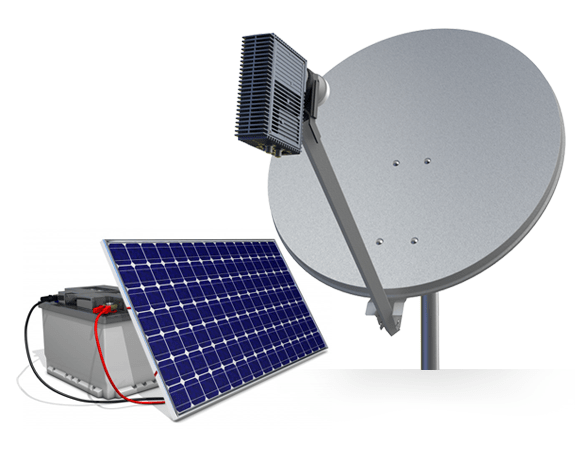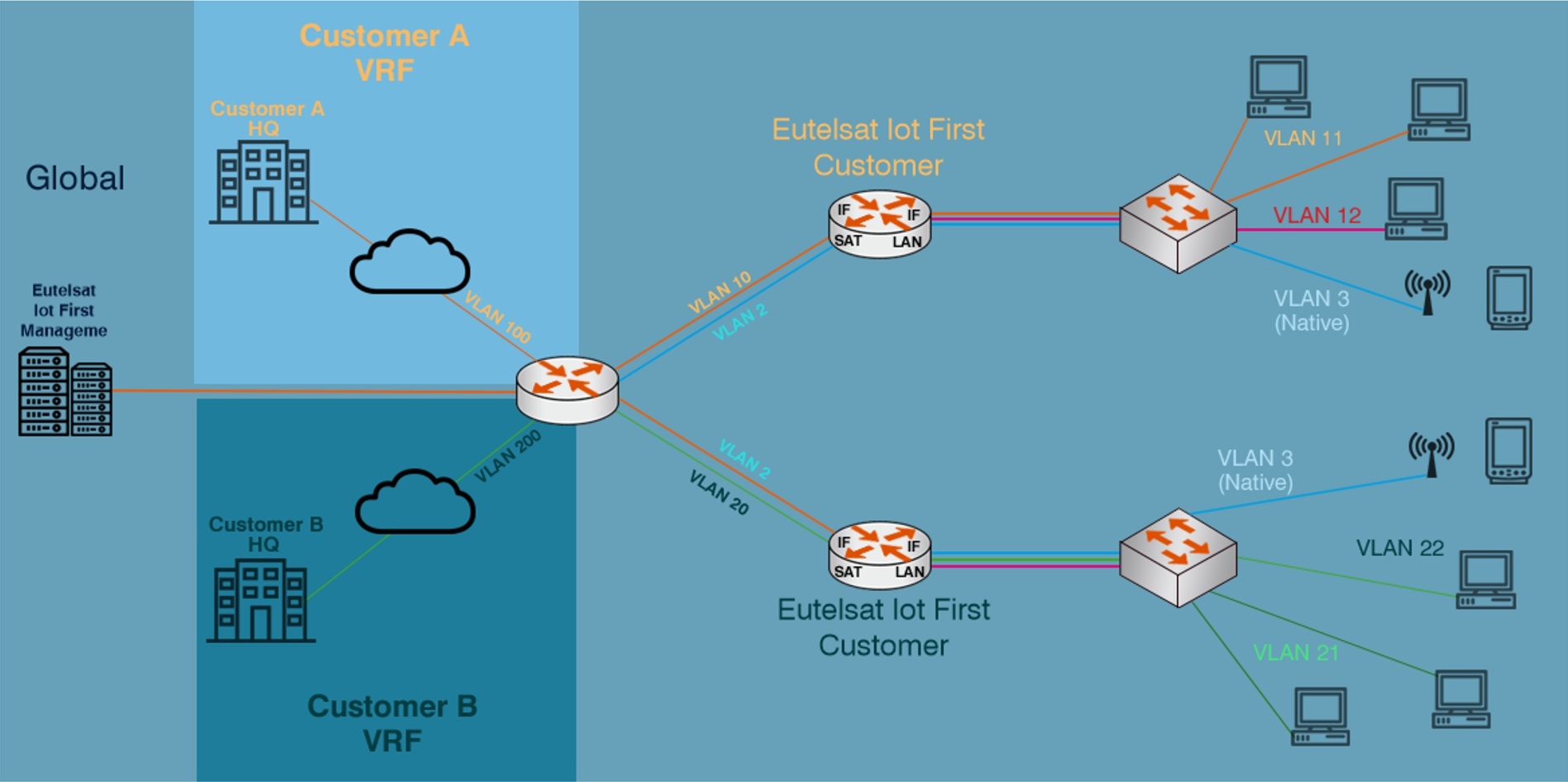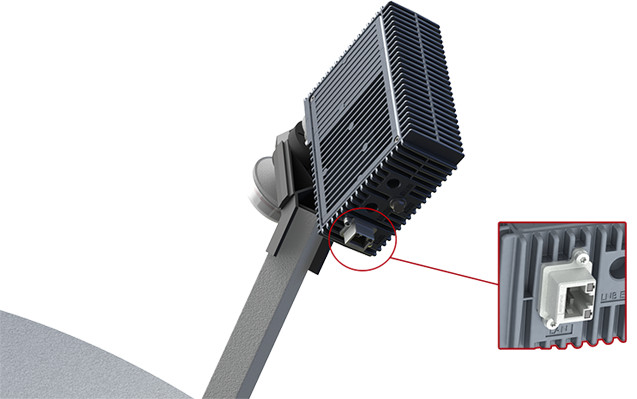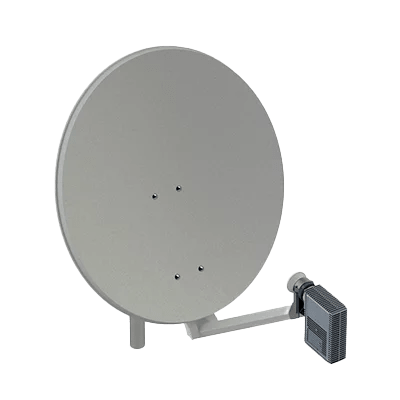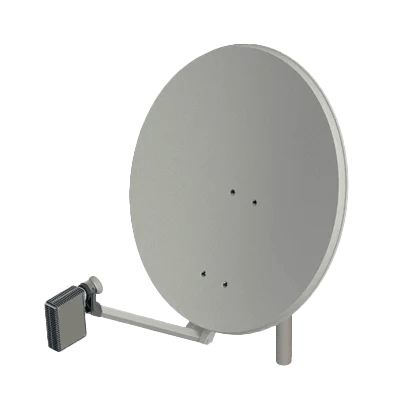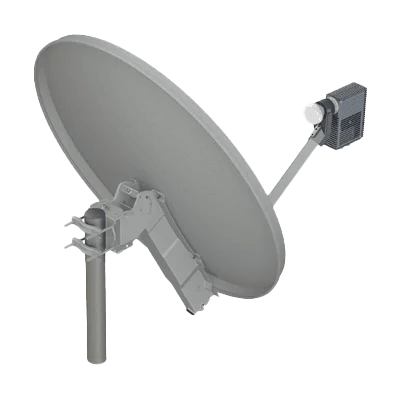Low power consumption
As the power consumption is a major concern for many customers, the “IoT First” Terminal features a set of Energy Saving Profiles that matches the reception and transmission demands of the end-application, thus drastically reducing the overall power consumption.
That way, it is possible to size the power supply system to meet the exact requirements of the end-application, enabling the use of clean and self-generated power technologies such as solar panels to power up the satellite modem.
VLAN-enabled
The”IoT First” Terminal satellite connectivity provides the users with a secure and private connection, independent of terrestrial networks with a guaranteed level of service and outstanding SLA.
It enables the use of Virtual LANs (VLANs), thus providing network segmentation, reuse of IP addresses and an augmented level of security in the IP data transactions.
Power over Ethernet
The “IoT First” Terminal is equipped with the Power Over Ethernet (PoE) technology, making it ideal for low data rate ‘pure IP’ applications, such as Machine to Machine or Internet of Things services. Unlike traditional VSAT modems where the modem itself is composed by one Outdoor and one Indoor Unit that are connected via a coaxial cable, the smartLNB’-PoE only comprises an Outdoor Unit, thus providing a very low cost of acquisition and installation compared to ‘Status Quo’ technologies.
To start enjoying the satellite connectivity, the end user only needs to interface its unconnected system (end IP-device, LAN switch/router, etc) to the RJ-45 port of the “IoT First” Terminal through an standard Ethernet cable and complete the antenna pointing, what it can be done rapidly by a non-professional user following the steps provided by a mobile application (iOS & Android).
Applications
The arrival of the “IoT First” Terminal is a step ahead over the traditional linear TV, as it offers virtual unlimited connected TV services, including: Push-video-on-demand, payment transactions, subscription-based and on-demand services, HbbTV, pay-per-view, social networking, live show participation, subscription management, audience measurement, etc.
The “IoT First” Terminal enables Platform Operators to broadcast full-IP video channels, so that they can be visualized directly in tablets, smartphones and every IP-native terminal owned by the end user.
Moreover, thanks to the return channel both service providers and users benefit from two-way IP applications tailored to every home device, which today are only accessible to OTT operators.
The capacity of receiving/transmitting IP data making use of a narrowband return channel opens the door to Machine-to-Machine (M2M) applications over satellite. The irrefutable growing need of in-home healthcare services combined with cost control provides ideal conditions for taking advantage of M2M applications. Remote monitoring for chronic diseases, assisted living for elderly people and follow-up of patients through homecare solutions are typical applications that can help the Healthcare ecosystem to cope with this challenge. All of this can be done by simply connecting the “IoT First” Terminal to personal sensors that collect different measurements, such us weight, blood pressure, glucose level, etc.
On the side of smart Homes, intelligent power meters can monitor energy consumption and guide the usage of electricity, warm water and heating. The connection of these smart appliances to the “IoT First” Terminal will enable a real-time knowledge of the actual energy consumption. Uncovering energy greedies and bad habits directly translate into savings and lower emissions.
Furthermore, through the “IoT First” Terminal the user can control remotely multiple devices deployed at home, such us videocameras, motion sensors or door/window locks, as well as to schedule actions like turning on/off lights or the heating system at a certain time/date.
The “IoT First” Terminal is a powerful tool for the professional market, like the Utilities sector. Based on a low data rate transmission, the satellite is a cost-effective and reliable platform to deliver automatic data from remote points within a network which can be even unmanned.
Moreover, this kind of M2M communications through satellite can be softly integrated with SCADA applications for controlling, managing and monitoring different assets and resources of Utilities.
 TERMINAL
TERMINAL